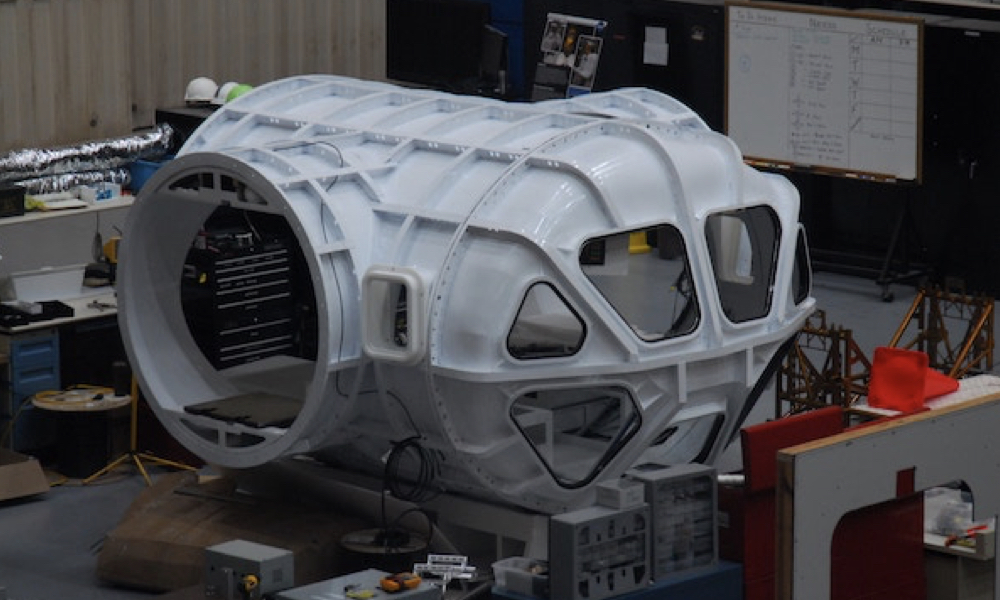
ESA Open Invitation to Tender AO9183
Open Date: 05/01/2018
Closing Date: 16/02/2018 13:00:00
Status: ISSUED
Reference Nr.: 17.139.06
Prog. Ref.: ExPeRT LEO & Moon
Budget Ref.: E/0116-41M – ExPeRT LEO & Moon
Special Prov.: AT+BE+CH+CZ+DE+DK+ES+FR+GB+GR+IE+IT+NL+NO+PL+PT+RO+SE+CA
Tender Type: C
Price Range: > 500 KEURO
Products: Satellites & Probes / Payloads / Instruments / Instruments ¿ BB
Techology Domains: Environmental Control & Life Support (ECLS) and In Situ Resource Utilisation (ISRU) / ISRU / ECLS Consumables / Environmental Control & Life Support (ECLS) and In Situ Resource Utilisation (ISRU) / ISRU / Fuels / Environmental Control & Life Support (ECLS) and In Situ Resource Utilisation (ISRU) / ISRU / Storage and Distribution
Establishment: ESTEC
Directorate: Directorate of Human Sp. & Robotic Exp.
Department: ISS Programme and Exploration Department
Division: Strategy & Innovation Team
Contract Officer: Kaysan Juliette
Industrial Policy Measure: N/A – Not apply
Last Update Date: 05/01/2018
Update Reason: Tender issue
ISRU is expected to be key to the sustainability of future human exploration of the Moon and Mars and couldbecome an area of interest for private sector in the future. For the Moon the primary need will be for the supplyof consumables to reduce the need for resupply from Earth. The primary consumables of interest is oxygen.Other consumables of interest include nitrogen and water to resupply Life Support Systems. All of these areavailable in materials found on the lunar surface. For this purpose, various feed-stock andresource extractionprocesses have been identified.Source materials include water ice from cold trapped deposits at the poles and oxygen chemically bound withinthe minerals and materials of the regolith. While cold trapped water ice has been observed, major uncertaintiesexist regarding its utility and significant additional prospecting is required before investments in ice dependentISRU systems are considered. It should therefore be regarded as a potential future resource meriting furthercomprehensive surface investigations. Regolith however is ubiquitous across the lunar surface and while thespecific mineralogy of regolith particles may vary with location, the oxygen content is typically around 40%.This oxygen can be extracted by various thermochemical processes with various yields and at varioustemperatures; typically greater than around 1000°C, of varying complexity and differing degrees ofapplicability to different regolith materials. Many potential chemical processes produce water as anintermediate product, from which oxygencan then be extracted by electrolysis.An approach is therefore targeted which is applicable to regolith feedstock at any location on the Moon (or anyother planet), applied in a system that could also be used to extract (and investigate) and process cold trappedwater (and other volatiles), if present.Functions in an ISRU system are: Feedstock extraction and loading Thermochemical reaction Solid waste extraction Gaseous product recovery and purification Intermediate product (e.g. water) handling and storage Water electrolysis Oxygen and hydrogen capture and storageA development and qualification approach has been established for ISRU technology which could ensurereadiness to for early human lunar missions.1. Prospecting and scientific validation of key process steps and assumptions – this step is addressed byPROSPECT whose first flight is planned onboard the Roscosmos-led Luna-27 mission in2022. Abroader polar prospecting effort is being coordinated at international level through ISECG.2. ISRU technology and end-to-end process demonstration and validation on Earth addressed by thisactivity and should be achieved before 2020.3. Flight demonstration and qualification of critical ISRU technologies and the end-to-end process potentially via low cost, commercial lunar landermission by 2025.4. In-Situ and fully scalable pilot plant providing useable resources a pilot plant could be flown as amajor payload on a human lunar exploration precursor mission enabled by the Deep Space Habitat by2030.5. Full ISRU system providing resources for human missions – could be achieved by the early 2030s.This activity builds on the technologies and capabilities that are being established through the development ofthe PROSPECT system (in particular in the areas of gas processing and purification and the kinematics of thereactions), past system studies which developed an architecture for an ISRU plant and bread-boarded a simplereactor demonstrator as well as expertise gained at Spaceship EAC related to processing of regolith, includinghandling, melting, sintering and resource extraction.The activity will develop the key technologies associated with the core functions of an ISRU system anddemonstrate and characterize the end-to-end process, with emphasis on the reactor coupled with the productrecovery and purification and storage system for water as an intermediate product. Waste management,maintai nability and lifetimme issues, e.g. related toaccumulation of by-product contaminants, shall also beconsidered.Later stages require the electrolysis of water which is considered a higher TRL technology and advanced withinthe of the Advanced Closed Loop system development. Water electrolysis is therefore not included in thisactivity. A follow-on to the activity would see the demonstrator adapted to operate in a thermal vacuumrepresentative environment. Future activities may also benefit from capabilities established at Spaceship EAC.The activity will feed forward to the development of a flight system demonstrator of the end-to-end ISRUprocess in the mid 2020s and eventually to an operational ISRU system.
If you wish to access the documents related to the Invitation to Tender, you have to log in to the ESA Portal.
